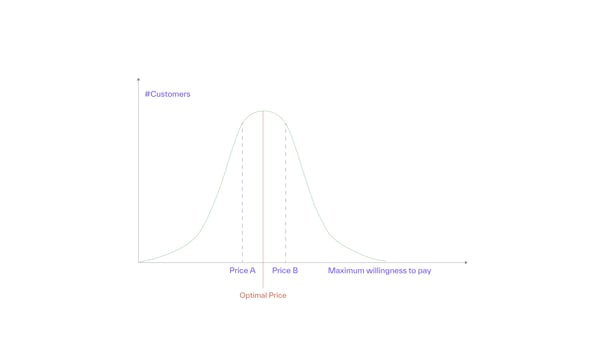Four Consumer Goods Use Cases Solved with Buynomics
In many industries, practices and standards emerge that become such an integral part of the business environment, no one dares to question them. Instead, the status quo is defended with simple answers. The consumer goods industry is no exception, with manufacturers having come to accept seemingly unchangeable circumstances.
Margins are extremely low? “We compensate for that by selling more”.
Promotions make a loss? “Our competitors offer them, so we should as well.”
Retailers negotiate terms that benefit mostly themselves? “Their bargaining power is simply too strong.”
Almost all these answers, however, can be traced back to a lack of better alternatives. Luckily, new technologies can generate a more profound understanding of current market dynamics and ultimately lead to better revenue management.
We show how machine learning and robust data helps managers to navigate price and portfolio decisions more confidently and to – quite simply – increase profits.
Revenue Management Challenges in the CPG Industry
Efficient revenue management is paramount in the highly competitive consumer goods industry. Unfortunately, executives face challenges in various aspects of their decision-making process. More specifically, we identified four core areas of improvement for revenue management:
- Pricing decisions too often rely on basic tools or expert judgement and fail to incorporate real world complexities appropriately. For instance, connections between one’s own pricing decisions and competitors’ moves often get overlooked.
- Promotions have turned more into a necessary evil instead of a tool to boost profits. In fact, most promotions make a loss.
- Product innovations always bear high risks. While they are important for a sustained competitive advantage, insufficient knowledge about shopper preferences can lead to costly failures.
- Trade terms are an important aspect of the consumer goods industry. Negotiating them can be arduous, however, especially because retailers enjoy great market power. Unfortunately, manufacturers too often get the short end of the deal.

Figure 1: Higher accuracy leads to higher revenues
How Buynomics Solves these Use Cases for Revenue Managers
Buynomics is built on the recognition that current solutions cannot help solve the complex challenges for revenue managers described above. Thanks to its machine learning technology it can addresses these as follows:
- Pricing decisions can include more data and deliver 7% revenue increase thanks to its virtual customer technology which gives >95% accurate forecasts. All of this can be specific to channels and markets allowing for better coordination across business units.
- Promotion planning can be optimized better thanks to greater market visibility and forecast accuracy. Profit and revenue goals can be optimized and balanced which improves their ROI significantly.
- Product innovations can be planned and priced better given the context of the existing market dynamics. Scenarios are highly accurate and thus reduce the time and budget spent on market research.
- Trade term negotiations are more transparent for the consumer goods companies amid growing complexity in channels and changes in tastes. This additional transparency helps achieve turning zero-sum games into win-win situations.
Summary
Price and portfolio setting in the consumer goods industry is complex for various reasons. Competition is fierce, and consumers compare products across multiple channels while showing little brand loyalty. Manufacturers rely on retailers to set final prices and need to negotiate favorable trade terms. Promotions have turned into a rarely questioned, yet unprofitable standard industry practice, and excessive discounts might let shoppers accept unnaturally low prices as the norm.
Buynomics, a SaaS based pricing platform, solves the current problems of revenue management for the consumer goods industry. Using a sample of Virtual Shoppers that behave like their real counterparts, prices and product features can be tested at no risk and zero marginal costs. With a >95% accuracy, Buynomics forecasts the impact of changes in prices, promotions, and adjustments to the product portfolio on the market. Trade terms are simulated as well, enabling more transparent and fruitful negotiations with retailers. As a result, Buynomics helped consumer good companies to increase overall revenue by 3-7%. Revenue managers use it as a powerful tool that saves time and effort while substantially improving the bottom line – resulting in more efficient and profitable decision-making.

October 26, 2022
.png?width=520&height=294&name=The%20Revenue%20Manager%20of%20Tomorrow%20(1).png)
.png?width=520&height=294&name=BYN_Resources_Blog_Banner%20(15).png)